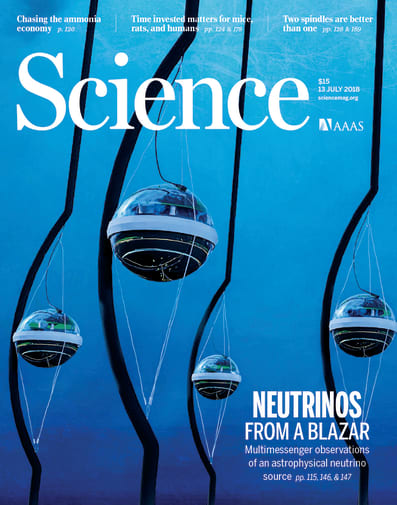Science papers describe first source of high-energy neutrinos by the first successful multimessenger campaign involving neutrinos
Two papers published in Science on July 12, 2018, provided the first evidence for a known blazar as a source of high-energy neutrinos detected by IceCube. This blazar, designated by astronomers as TXS 0506+056, was singled out following a neutrino alert sent by IceCube on September 22, 2017. IceCube broadcast coordinates of that alert to telescopes worldwide for follow-up observations. Gamma-ray observatories, including NASA’s orbiting Fermi Gamma-ray Space Telescope and the Major Atmospheric Gamma Imaging Cherenkov Telescope (MAGIC) in the Canary Islands, detected a flare of high-energy gamma rays associated with TXS 0506+056, a convergence of observations that convincingly implicated the blazar as the most likely source. Read more here, here, and here.
